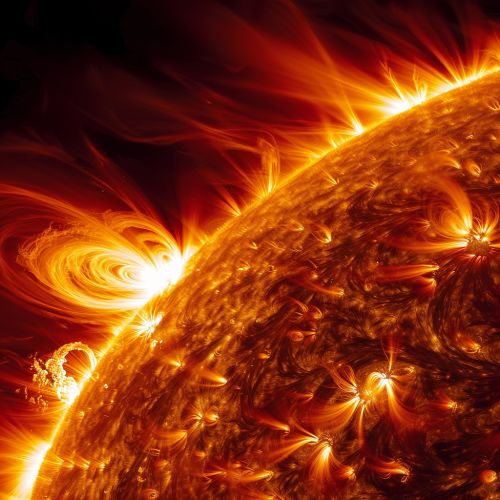Sun as a Star
Introduction
The Sun is the star at the center of the Solar System. It is a nearly perfect sphere of hot plasma, with internal convective motion that generates a magnetic field via a dynamo process. It is by far the most important source of energy for life on Earth. Its diameter is about 1.39 million kilometers, or 109 times that of Earth, and its mass is about 330,000 times that of Earth. It accounts for about 99.86% of the total mass of the Solar System.
Composition and Structure
The Sun is composed primarily of the chemical elements hydrogen and helium. At its core, the Sun's extremely high temperature and pressure enable nuclear fusion to occur, through a process called the proton-proton chain reaction, which releases energy in the form of light and heat.


The Sun's structure consists of the core, the radiative zone, and the convective zone in the interior, and the photosphere, the chromosphere, and the corona in the atmosphere. The core is the innermost and hottest region where nuclear fusion occurs. The radiative zone and convective zone transport energy outward from the core. The photosphere is the visible surface of the Sun that we are most familiar with. Above the photosphere lie the chromosphere and the corona, which is the outermost layer of the solar atmosphere.
Solar Activity
The Sun exhibits a phenomenon known as the solar cycle, which is an approximately 11-year periodic change in its activity measured in terms of variations in the number of observed sunspots on the solar surface. Sunspots are visible as dark patches on the Sun's photosphere, and they are areas of intense magnetic activity.
The Sun also emits a continuous stream of charged particles, known as the solar wind, which permeates the Solar System. This wind carries with it the Sun's magnetic field, creating what is known as the heliosphere, a vast bubble in the interstellar medium that surrounds the Solar System.
Impact on Earth
The Sun's energy, in the form of sunlight, supports almost all life on Earth via photosynthesis, and drives Earth's climate and weather. The enormous effect of the Sun on Earth has been recognized since prehistoric times, and the Sun has been regarded by some cultures as a deity.
